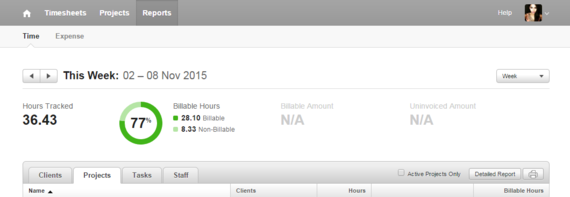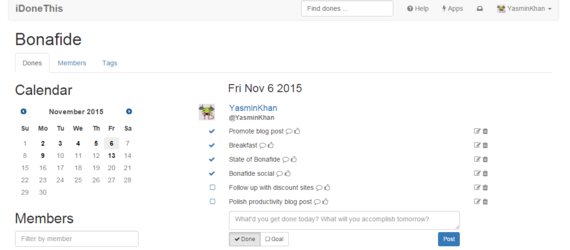We live in an entrepreneurial time, where productivity, efficiency, and working from home are not only ideals and goals, but they're crucial to business' success. Gone are the days of riding the time clock just to log 40 hours a week at your 9-5 job.
These days, what you get done and the results you produce are far more important and valuable to the team than someone who spends all day on a single task, in between their personal phone calls, extended breaks, and fantasy footballing.
The truth is -- there's always work that needs to be done. The work is never finished. The clients are never satisfied. We always feel as though we could be doing more. Employees, supervisors, and entrepreneurs alike are empowered to take initiative and do whatever they think will help further the business.
In this type of structure, a minimum of 40 hours of work a week is not unreasonable to expect from your employees - as long as they're being well spent. When there's always work to do, there's no reason to spend any of those hours in a never-ending YouTube loop. So, instead of talking about how to cut down your work hours from 40 to 10, let's talk about how you can get the most out of the 40 hours you're already putting in.
Tasks Completed Versus Time Spent
The value of time-tracking is undeniable. Once you start, you won't want to stop. Using a time-tracking app, such as Harvest, you can see where your employees are spending their time. You can organize your day by task and by client, as opposed to just 8-hour blocks of vague "work."
Honestly, employees don't like wasting their time, and employers don't like thinking about those opportunity costs. With time-tracking, you can literally see where time is being wasted so that you can reallocate your time more effectively. This way, more tasks get completed in a timely manner, and your clients get the most out of their retainers.
Work-From-Home Wednesdays
Sometimes, you've just got to get out of the office, hunker down, and get to work. People definitely work differently in an office than they do at home or in a coffee shop, so implementing a work-from-home day can result in an amazing boost in productivity. These days are great for tasks that require more thought and creativity, such as copywriting, drafting business plans for clients, coming up with marketing strategies, etc.
Of course, the success of this kind of initiative will depend on the nature of your work, as well as the nature of your employees, but holding people accountable for their time will help. Using a tool, like IDoneThis, you can track what everyone hopes to accomplish on the work-from-home day and see as they check things off from their list.
Reverse-Engineering
Sometimes, even without specific goals in place, good things happen. For example, maybe you noticed that your social reach on Twitter has been growing exponentially compared to other social platforms, and you want to know why. With a little time-record detective work, maybe you'll find that your employees have been spending extra time nurturing Twitter leads. If you like the results -- duplicate them!
Manage Deadlines
It can be tricky to keep yourself on task all the time, but when you've got a deadline approaching, you've got to make sure your time is being spent in the right places. Teamwork, for example, is a tool that can help you stay on task and on time, and to communicate plans-of-action with your clients. By creating and communicating deadlines to your clients, you're allowing them to hold you accountable. This keeps tasks off the back-burner, and it gives your clients peace of mind knowing that their business' needs are being tended to.
Set Goals for the Day
First thing when you get into the office, outline the tasks that you need or want to get done that day, along with estimates for how much time you want to spend on each. This will help keep you on track throughout the day, instead of realizing it's 3:00 p.m. and you still haven't gotten your first task done. It also gives you a chance to adjust your time estimates as the day goes on. Your estimates will almost always change, due to unexpected things that come up throughout the day, but that's ok, as long as you manage them effectively.
Embrace the Creative Process
Some tasks are easier to time-manage than others. More tedious tasks may be boring, but they are fairly predictable as far as how long they'll take. Still, content creation of any kind will take some time, and how much time they take is really anyone's guess. For tasks that require more legwork and creative license, time-tracking can calling attention to time-wasting and procrastination as they occur. If you notice that you're wasting too much time on a particular task, put it aside and come back to it later.
Do Weekly Self-Audits
After a week of diligent time-tracking, goal setting, and task-completing, it's good to take inventory of the hours that actually passed and where it went. By checking out the time spent over the course of a week, you can reassess your resource allocation as you go. For example, if you notice that one client is eating up more of your time than they're paying for, you can nip it in the bud, rather than let that time continue to inflate over the course of a few weeks. By doing this, you're not only using your time more wisely, but you're using the company's resources in a manner that is mutually beneficial to you and your clients.
Once you start time-tracking, there's no going back. What was life before time-tracking? I can't really remember, but it sounds like it sucked.
Read the full post on the Bonafide blog.




